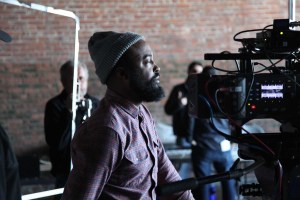
It’s been “a most wonderful year” for 34-year-old director of photography Bradford Young. Already on the radar for lensing Ain’t Those Bodies Saints and Mother of George, which together got him the best cinematography award at the 2013 Sundance Film Festival, Young has lately been catapulted into the top ranks of DPs.
The reason for the increased recognition is his elegant, self-assured and powerful camera work on two high-profile movies vying for honors during the current awards season. They are A Most Violent Year, helmer J.C. Chandor’s crime tale set in the sleazier New York of the early 1980s; and director Ava DuVernay’s Selma, the epic story of Martin Luther King and the pivotal role he played in the 1965 civil rights demonstrations that led to the passage that year of the historic Voting Rights Act. The African-American DP has received an Independent Spirit Award nomination for best cinematography for his work on Selma.
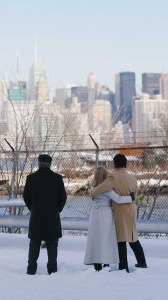
The location filming of Chandor’s movie about a striving immigrant, played by Oscar Isaac, who in 1981 – statistically the most dangerous year in NYC history in terms of murders – is trying to build his own business amidst the rampant crime and political corruption of a city then in decay, took place during what turned out to be one of the most frigid winters in the history of the Big Apple.
“It’s always been a dream of mine to shoot in snow. It’s so beautiful and photographs so well, but when you’re doing it in such cold conditions it is not so dreamy. It was brutal and it was tough,” recalled the DP. “But it added a mysterious patina, a textural quality to the movie that we wouldn’t have had if it were sunny. It was a gift.”
The snow, besides adding to the aesthetic contributed to the movie’s sense of menace, typified by a wide-screen shot that tilts down from a distant skyline of Manhattan to a large snowfield, with the skyscrapers looking like “the teeth of a beast; the city is really an animal in this shot,” said Young.
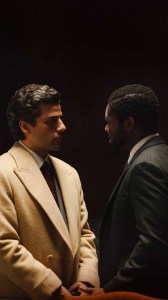 The movie takes place almost entirely in New York’s outer boroughs, with Manhattan only viewed from afar. A visual inspiration for the DP was the photography of Jamel Shabazz, who had also drawn director Chandor’s attention. “Jamel’s work tends to be very magenta in terms of its hue. It’s warm and creamy,” noted the cinematographer. “He captured marginalized subjects and heightened their sense of humanity by shooting them in a mindful way. I wanted to bring that same kind of quality to our movie – capturing a city in distress.”
The movie takes place almost entirely in New York’s outer boroughs, with Manhattan only viewed from afar. A visual inspiration for the DP was the photography of Jamel Shabazz, who had also drawn director Chandor’s attention. “Jamel’s work tends to be very magenta in terms of its hue. It’s warm and creamy,” noted the cinematographer. “He captured marginalized subjects and heightened their sense of humanity by shooting them in a mindful way. I wanted to bring that same kind of quality to our movie – capturing a city in distress.”
Critics have compared A Most Violent Year to the films of Sidney Lumet and other directors from the 1970s golden age of filmmaking who often used New York City as settings for their gritty features. Many of Young’s favorite cinematographers also did some of their best work in that era. As influencers he cites DP’s Gordon Willis, Owen Roizman, Conrad Hall and Victor Kemper. “These are the ‘Princes of Darkness’ that inspire me,” he declared.
Young went dark in a different way in Selma, sensitively capturing the various shades of black skin tones of the many African-American actors who were cast as prominent figures in the civil rights movement surrounding King at the time. Front and center was MLK himself, brilliantly and definitively portrayed by David Oyelowo. King’s visage, either solo or in group scenes, was captured with creative ingenuity by Young.
“Bradford shoots black people like no one else. It’s challenging to differentiate all those skin tones,” said director DuVernay. “The care taken in photographing the black and brown body in cinema has been lacking, and you have someone like Bradford, who’s a part of a really small tribe of people who’ve tried to interrogate that and do something special, so I am fortunate to call him my DP.”
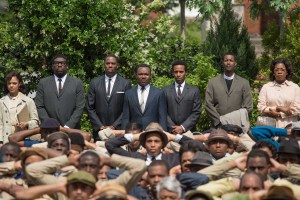
“I’m never satisfied with the way I see my people photographed in movies,” Young said in an interview with the website Collider. “I think it comes from a lack of consciousness. If you grew up in a community where you don’t know black people, I wouldn’t suspect you would photograph them in a concerned way.”
Selma is the second collaboration between DuVernay and Young. He was the cinematographer on Middle of Nowhere. For visual inspiration, the director referred the DP to the Kodachrome photography of the period. Young was also influenced by newsreels from the era and also Paul Fusco’s journalistic photographs of Robert F. Kennedy’s funeral train, thronged with crowds of average citizens at each stop as it journeyed across the country following his assassination.
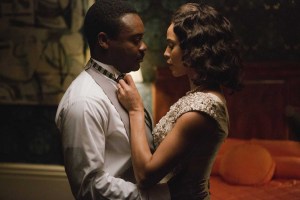 Many of the scenes in Selma are intimate, involving conversations between King and his wife Coretta (Carmen Ejogo) or showdowns with President Lyndon Johnson (Tom Wilkinson) in the oval office. The big set piece for the film is Bloody Sunday, the climactic march over the Edmund Pettus Bridge, where civil rights demonstrators are first violently repulsed but then allowed to pass and continue triumphantly to their final destination, Montgomery, Alabama, the state’s capital.
Many of the scenes in Selma are intimate, involving conversations between King and his wife Coretta (Carmen Ejogo) or showdowns with President Lyndon Johnson (Tom Wilkinson) in the oval office. The big set piece for the film is Bloody Sunday, the climactic march over the Edmund Pettus Bridge, where civil rights demonstrators are first violently repulsed but then allowed to pass and continue triumphantly to their final destination, Montgomery, Alabama, the state’s capital.
The scene was shot on location at the bridge. It was shut down for a day and a half. The huge contingent of marchers that appear on the screen consisted of only about 100 extras and Young used cinematographic techniques to disguise the fact. “With very little time we had to make sure we employed some classic film tricks to fill in the gaps for all the resources we lacked,” the DP noted. Young used smoke to conceal the lack of bodies. He also used the smoke, appearing to be tear gas, “to focus more on the specific events of the day, the brutality directed against the demonstrators,” he explained.
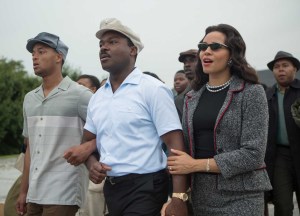 “You have a lot to cover and you don’t have much time – a day and a half – so we had to be very smart and very strategic,” the DP noted. “But you also have to leave some room for the moment to evolve. So I couldn’t be too rigid. I had to relax a bit and let things flow in front of the camera.” The bridge scene was shot using multiple cameras. The entire movie was captured digitally with ARRI Alexas and old anamorphic lenses, including one mounted on a Technocrane to capture the Selma march from above.
“You have a lot to cover and you don’t have much time – a day and a half – so we had to be very smart and very strategic,” the DP noted. “But you also have to leave some room for the moment to evolve. So I couldn’t be too rigid. I had to relax a bit and let things flow in front of the camera.” The bridge scene was shot using multiple cameras. The entire movie was captured digitally with ARRI Alexas and old anamorphic lenses, including one mounted on a Technocrane to capture the Selma march from above.
How did filming the scene at the Pettus Bridge and in Selma as well as other places in Alabama where the historic events took place affect the shoot? “The energy and spirit of that town was with us the whole time. It’s hard to measure the enormous effect that had,” said Young.
For now Young has no specific projects on tap. He recently finished working on a documentary about Nora Ephron, the late author and screenwriter. “For now it’s time to relax and spend some time with family.”





